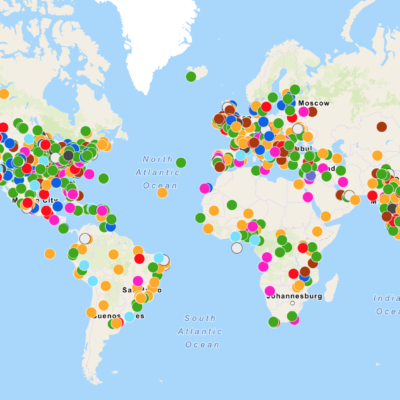Take Action
Plan a Digital Event
ADVOCATE FOR PEOPLE AND PLANET
To protect public health during the COVID-19 crisis, Earth Day went digital. That’s a shift, not a sacrifice — digital tools are helping us get more connected than ever.
From the small discussion over a video chat to the massive audiences on social media and streaming services, billions of people are still going online to discuss, learn, advocate and make a difference for each other.
People like you make the real difference on days like Earth Day — and the days after.
Below this, you’ll find a basic planning guide and a series of materials to inspire your event. Start small or go big — Earth Day is a space for everyone, including you.
Thanks for being a part of this. We hope you’re staying safe and healthy.
The Basics
Online gatherings have briefly become the new normal. Classes, concerts and religious gatherings, to name a few, are going online. Earth Day was the largest global event to make the shift online since the start of this outbreak. Luckily, we're more connected than ever. Besides the personal actions you can take on this page, you can still bring together groups online to advocate for our shared planet.
Read through the rest of this section to learn ways to digitally organize along with standard event-planning advice. The only way to improve the world is to bring people together and work hard; Earth Day is every year, but any day is your next chance to take action.
This can be the easiest part—use who you have already! Invite friends, family, and coworkers to an evening meeting to assign some roles and think about Step Two.
Choosing roles will make your next steps much easier.
The three basic roles of an Earth Day event are: Outreach (getting the word out), Organizing (giving structure to the event) and Logistics (handling setup, equipment and finances)
Not sure of the right topic? Read our Climate Discussion Kit below for ideas.
Your event type should match what your community needs and what your team wants to do. If local health guidelines recommend against gatherings, think about the platform that can best reach your audience. If everyone has internet access, a video call could be great. If internet connections are an issue, think about an action taken at a specific time, like planting trees or calling elected officials.
EARTHDAY.ORG has tools to help you plan almost anything. Browse earthday.org to check out your options.
Earth Day is April 22 each year, but you can hold events at any point before or after! You'll need...
...A time (morning, afternoon, or evening)
...A place (at home, a streaming service, or a video call platform)
...The main point of contact (this can be a general email like earthday[your city]@gmail.com)
...and the major details that people should know. Once you have those, register the event on the Earth Day map and calendar. If you have to make any edits later, email [email protected] with the changes.
More than one billion people participated in the last Earth Day. So don't worry — you have an audience out there. Let them know they can participate by sending the message on a few platforms:
1. Post events on the Earth Day map and calendar. The first place where people go to find an Earth Day event is earthday.org. Make sure that yours is there.
2.
Share within your network. Post to every social media account and ask your other organizers to do the same. When someone agrees to come, ask them to invite your friends! You don't have to call to invite every attendee. Ask your attendees to do it for you.
3.
Get some coverage. Ask for help from groups that can reach your audience: Your local newspaper could write an article, politicians like your mayor or city hall could announce the event, or if you're a student, school administrators could send out an email to the student body. You don't have to build your own list — ask for help from the people who already have one.
Have you planned the basics and gathered your team? Then get people excited!
The best way to grow the event is to recruit local leaders. Elected officials, popular teachers, or respected community members can be the "face" of your event. Remember, you don't have to build everything from scratch. Use existing structures of trust, popularity and expertise to make your event a success.
Modern technology is good, but not perfect. If you're using a video chat, a livestream tool, a social media platform, or something else, take some time to test its limits and find best practices. Ask yourself and your team these questions:
- How many people can participate at once, and for how long?
- How will you moderate content? (Tip: it's a good idea to have at least one person assigned as a moderator to answer questions, sharing links, and removing posts if necessary)
- How will you follow up? Think of the next steps during or after the event to keep your participants engaged.
Those are the basics! If you're doing something that's large and complex, it's only more important to be sure that you have the right tools to be a success. Whatever the size and subject of your event, thanks for taking action for a better planet. Keep browsing earthday.org for more materials — we're here to help you succeed.
EVENT RESOURCES
Option 1: Use a Guide
Follow a structured guide on specific topics.
Option 2: PiCK A TOPIC
Read our campaigns and materials to see what applies to your goals. Earth Day 2021's theme is Restore Our Earth.
OPTION 3: GET IDEAS FROM OTHERS
Let other organizers around the world inspire you.
AND When you're ready:

